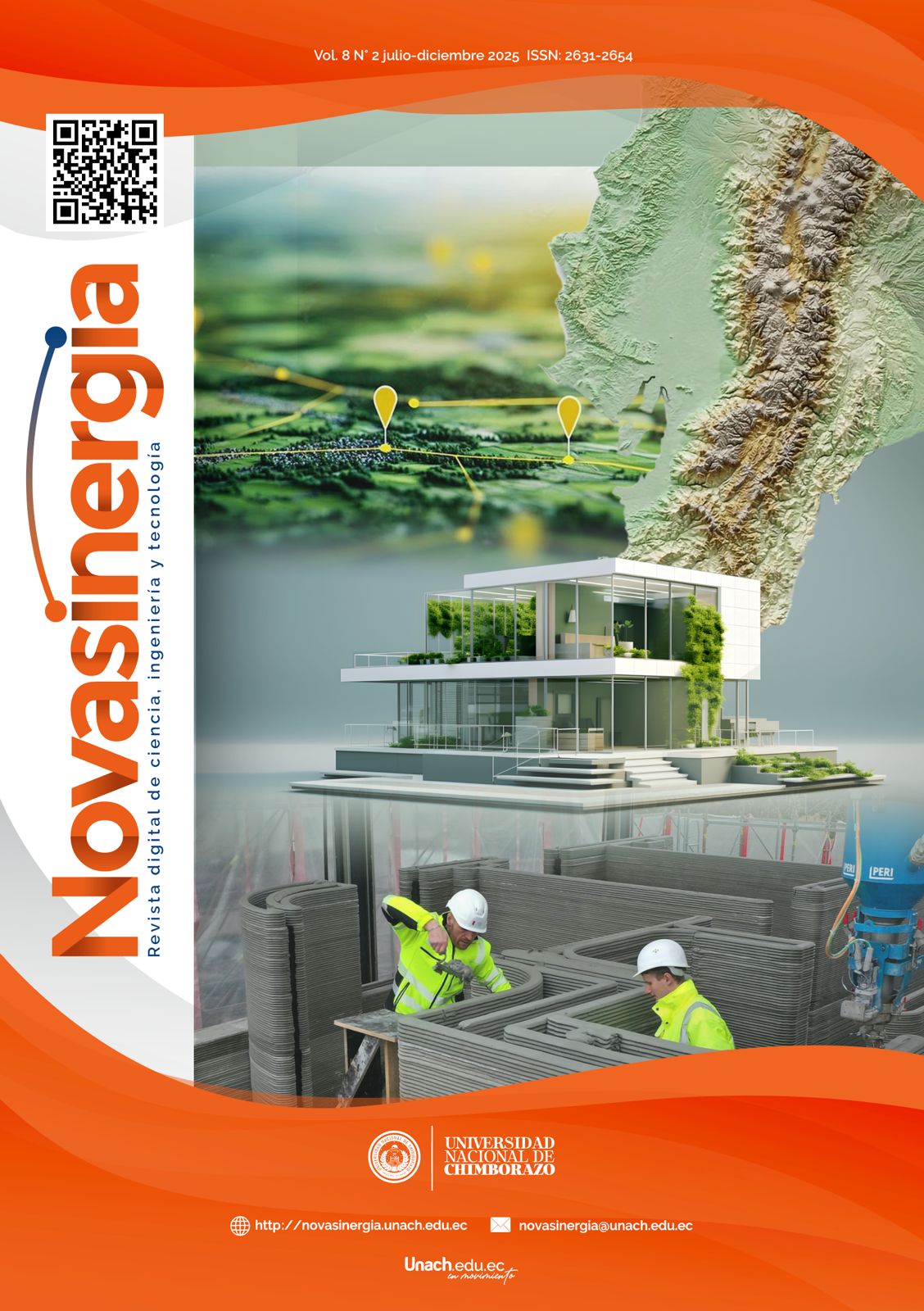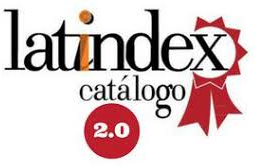Diseño de corredores ecológicos para el oso de anteojos en el nororiente del Ecuador utilizando modelamiento matemático
DOI:
https://doi.org/10.37135/ns.01.16.01Palabras clave:
corredor, ecológico, Maxent, oso anteojos, modeloResumen
El oso de anteojos (Tremarctos ornatus) nativo de los Andes es una especie catalogada como vulnerable según la lista roja de especies amenazadas. En el Ecuador, esta especie se ve en peligro debido a la fragmentación de su hábitat provocado por el cambio de uso y cobertura del suelo. Una estrategia para la conservación de esta especie es el diseño de corredores ecológicos que permitan mejorar la movilidad entre diferentes áreas protegidas. El objetivo del presente estudio fue aplicar modelos matemáticos en el diseño de corredores ecológicos que favorezcan la movilidad del oso de anteojos entre el área del Parque Nacional Cayambe-Coca y la Reserva Ecológica Antisana, ubicadas al nororiente del Ecuador. Con la aplicación del modelo Maxent se determinó la distribución potencial del hábitat del oso andino en el área de estudio. Luego, se utilizó el algoritmo Random Forest para clasificar una imagen satelital y generar el mapa de uso y cobertura del suelo para el año 2020, la clasificación obtuvo un coeficiente kappa de 0.87. Finalmente, el modelo de ruta de menor costo (LCP) de Dijkstra se ejecutó con base en seis variables (altitud; pendiente; distancia a vías; distancia a centros poblados; mapa de uso del suelo; mapa de distribución potencial de hábitat). Esto permitió delinear tres potenciales corredores de conectividad de hábitat para el oso de anteojos. Los resultados nos indican que el método propuesto es suficientemente robusto y podría usarse también para otras especies en peligro y en otras zonas donde se requiera estudiar la conectividad entre hábitats.
Descargas
Referencias
.[1] IPBES, “Summary for policymakers of the global assessment report on biodiversity and ecosystem services,” Zenodo, Nov. 2019. doi: https://doi.org/10.5281/zenodo.3553579.
.[2] C. Hald-Mortensen, “The main drivers of biodiversity loss: a brief overview,” JENR, vol. 7, no. 3, p. 346, 2023, doi: https://doi.org/10.23880/jenr-16000346.
.[3] M. A. Tucker et al., “Moving in the Anthropocene: Global reductions in terrestrial mammalian movements,” Science, vol. 359, no. 6374, pp. 466–469, Ene. 2018, doi: https://doi.org/10.1126/science.aam9712.
.[4] B. Zukowski y A. Ormsby, “Andean Bear Livestock Depredation and Community Perceptions in Northern Ecuador,” Hum. Dimens. Wildl., vol. 21, no. 2, pp. 111–126, Feb. 2016, doi: https://doi.org/10.1080/10871209.2015.1126871.
.[5] A. Cotrina Sánchez et al., “Integrated cloud computing and cost effective modelling to delineate the ecological corridors for Spectacled bears (Tremarctos ornatus) in the rural territories of the Peruvian Amazon,” Glob. Ecol. Conserv., vol. 36, p. e02126, Ago. 2022, doi: https://doi.org/10.1016/j.gecco.2022.e02126.
.[6] P. Sandoval-Guillén y P. Yánez-Moretta, “Aspectos biológicos y ecológicos del oso de anteojos (Tremarctos Ornatus, Ursidae) en la zona andina de Ecuador y perspectivas para su conservación bajo el enfoque de especies paisaje,” La Granja, vol. 30. scielo, pp. 19–27, Sep. 2019, doi: https://doi.org/10.17163/lgr.n30.2019.02.
.[7] X. Velez-Liendo et al., “Andean Bear (Tremarctos ornatus),” in Bears of the World: Ecology, Conservation and Management, V. Penteriani and M. Melletti, Eds. Cambridge: Cambridge University Press, 2020, pp. 78–87, doi: https://doi.org/10.1017/9781108692571.008.
.[8] G. Kattan et al., “Range fragmentation in the spectacled bear Tremarctos ornatus in the northern Andes,” Oryx, vol. 38, no. 2, pp. 155–163, May. 2004, doi: https://doi.org/10.1017/S0030605304000298.
.[9] F. Cuesta, M. F. Peralvo, y F. T. van Manen, “Andean bear habitat use in the Oyacachi River Basin, Ecuador,” Ursus, vol. 14n no. 2, pp. 198–209, 2003.
.[10] X. Velez-Liendo y S. García-Rangel, “Tremarctos ornatus (errata version published in 2018),” The IUCN Red List of Threatened Species, Feb. 2017, doi: https://doi.org/10.2305/iucn.uk.2017-3.rlts.t22066a45034047.en.
.[11] M. F. Peralvo, F. Cuesta, y F. van Manen, “Delineating priority habitat areas for the conservation of Andean bears in northern Ecuador,” Ursus, vol. 16, no. 2, pp. 222–233, Nov. 2005, doi: https://doi.org/10.2192/1537-6176(2005)016[0222:DPHAFT]2.0.CO;2.
.[12] I. Goldstein, S. Paisley, R. Wallace, J. P. Jorgenson, F. Cuesta, y A. Castellanos, “Andean bear–livestock conflicts: a review,” Ursus, vol. 17, no. 1, pp. 8–15, Abr. 2006, doi: https://doi.org/10.2192/1537-6176(2006)17[8:ABCAR]2.0.CO;2.
.[13] S. Molina, A. K. Fuller, D. J. Morin, y J. A. Royle, “Use of spatial capture–recapture to estimate density of Andean bears in northern Ecuador,” Ursus, vol. 28, no. 1, pp. 117–126, May. 2017, doi: https://doi.org/10.2192/URSU-D-16-00030.1.
.[14] S. García-Rangel, “Andean bear Tremarctos ornatus natural history and conservation,” Mammal Rev., vol. 42, no. 2, pp. 85–119, Mar. 2012, doi: https://doi.org/10.1111/j.1365-2907.2011.00207.x.
.[15] Ministerio del Ambiente y Agua del Ecuador., Plan de acción para la conservación del oso andino (Tremarctos ornatus) en el Ecuador. Quito, 2020.
.[16] J. Peng et al., “Linking ecosystem services and circuit theory to identify ecological security patterns,” Sci. Total Environ., vol. 644, pp. 781–790, Dic. 2018, doi: https://doi.org/10.1016/j.scitotenv.2018.06.292.
.[17] W. Hong, R. Guo, M. Su, H. Tang, L. Chen, y W. Hu, “Sensitivity evaluation and land-use control of urban ecological corridors: A case study of Shenzhen, China,” Land use policy, vol. 62, pp. 316–325, Mar. 2017, doi: https://doi.org/10.1016/j.landusepol.2017.01.010.
.[18] S. Saura, B. Bertzky, L. Bastin, L. Battistella, A. Mandrici, and G. Dubois, “Global trends in protected area connectivity from 2010 to 2018,” Biol. Conserv., vol. 238, p. 108183, Oct. 2019, doi: https://doi.org/10.1016/j.biocon.2019.07.028.
.[19] P. Cisneros-Araujo et al., “The Role of Remote Sensing Data in Habitat Suitability and Connectivity Modeling: Insights from the Cantabrian Brown Bear,” Remote Sensing, vol. 13, no. 6. Mar. 2021, doi: https://doi.org/10.3390/rs13061138.
.[20] C. Bellamy et al., “A sequential multi-level framework to improve habitat suitability modelling,” Landsc. Ecol., vol. 35, no. 4, pp. 1001–1020, Mar. 2020, doi: https://doi.org/10.1007/s10980-020-00987-w.
.[21] A. Guisan et al., “Predicting species distributions for conservation decisions,” Ecol. Lett., vol. 16, no. 12, pp. 1424–1435, Oct. 2013, doi: https://doi.org/10.1111/ele.12189.
.[22] G. Ríos-Alvear et al., “Key connectivity areas in the Llanganates-Sangay Ecological Corridor in Ecuador: A participative multicriteria analysis based on a landscape species,” Landsc. Urban Plan., vol. 246, p. 105039, Jun. 2024, doi: https://doi.org/10.1016/j.landurbplan.2024.105039.
.[23] B. H. McRae, B. G. Dickson, T. H. Keitt, y V. B. Shah, “Using circuit theory to model connectivity in ecology, evolution, and conservation,” Ecology, vol. 89, no. 10, pp. 2712–2724, Oct. 2008, doi: https://doi.org/10.1890/07-1861.1.
.[24] N. D. de Oliveira-Junior, G. Heringer, M. L. Bueno, V. Pontara, y J. A. A. Meira-Neto, “Prioritizing landscape connectivity of a tropical forest biodiversity hotspot in global change scenario,” For. Ecol. Manag., vol. 472, p. 118247, Sep. 2020, doi: https://doi.org/10.1016/j.foreco.2020.118247.
.[25] G. Meza Mori et al., “Predictive Modelling of Current and Future Potential Distribution of the Spectacled Bear (Tremarctos ornatus) in Amazonas, Northeast Peru,” Animals, vol. 10, no. 10, Oct. 2020, doi: https://doi.org/10.3390/ani10101816.
.[26] F. Cerasoli, P. D’Alessandro, y M. Biondi, “Worldclim 2.1 versus Worldclim 1.4: Climatic niche and grid resolution affect between-version mismatches in Habitat Suitability Models predictions across Europe,” Ecol. Evol., vol. 12, no. 2, p. e8430, Feb. 2022, doi: https://doi.org/10.1002/ece3.8430.
.[27] N. Gorelick, M. Hancher, M. Dixon, S. Ilyushchenko, D. Thau, y R. Moore, “Google Earth Engine: Planetary-scale geospatial analysis for everyone,” Remote Sens. Environ., vol. 202, pp. 18–27, Dic. 2017, doi: https://doi.org/10.1016/j.rse.2017.06.031.
.[28] S. J. Phillips, M. Dudík, y R. E. Schapire, Maxent software for modeling species niches and distributions (Version 3.4.1). [Online]. Disponible: http://biodiversityinformatics.amnh.org/open_source/maxent/.
.[29] L. Breiman, “Random Forests,” Mach. Learn., vol. 45, no. 1, pp. 5–32, 2001, doi: https://doi.org/10.1023/A:1010933404324.
.[30] Global Biodiversity Information Facility, “Free and open access to biodiversity data”, GBIF Global Biodiversity Information Facility. [Online]. Disponible: https://www.gbif.org/.
.[31] QGIS, “Spatial without compromise”. [Online]. Disponible: https://www.qgis.org.
.[32] Global Biodiversity Information Facility, “QGIS. A Free and Open Source Geographic Information System” GBIF Global Biodiversity Information Facility. [Online]. Disponible en: https://www.gbif.org/es/tool/81453/qgis.
.[33] M. Buchhorn et al., “Copernicus Global Land Service: Land Cover 100m: collection 3: epoch 2019: Globe.” Zenodo, Sep. 2020, doi: https://doi.org/10.5281/zenodo.3939050.
.[34] Infraestructura de Datos Espaciales para Instituto Geográfico Militar, 2017, “Escala Nacional 1:100000, Capas de Información Geográfica Básica del IGM de libre acceso. Codificación UTF-8” Geoportal del Instituto Geográfico Militar. [Online]. Disponible: https://www.geoportaligm.gob.ec/portal/index.php/descargas/cartografia-de-libre-acceso/registro/
.[35] S. J. Phillips, R. P. Anderson, y R. E. Schapire, “Maximum entropy modeling of species geographic distributions,” Ecol. Model., vol. 190, no. 3-4, pp. 231–259, Ene. 2006, doi: https://doi.org/10.1016/j.ecolmodel.2005.03.026.
.[36] A. T. Peterson, M. Papeş, y J. Soberón, “Rethinking receiver operating characteristic analysis applications in ecological niche modeling,” Ecol. Model., vol. 213, no. 1, pp. 63–72, 2008, doi: https://doi.org/10.1016/j.ecolmodel.2007.11.008.
.[37] M. B. Araújo, R. G. Pearson, W. Thuiller, y M. Erhard, “Validation of species–climate impact models under climate change,” Glob. Chang. Biol., vol. 11, no. 9, pp. 1504–1513, Jul. 2005, doi: https://doi.org/10.1111/j.1365-2486.2005.01000.x.
.[38] M. Drusch et al., “Sentinel-2: ESA’s Optical High-Resolution Mission for GMES Operational Services,” Remote Sens. Environ., vol. 120, pp. 25–36, May. 2012, doi: https://doi.org/10.1016/J.RSE.2011.11.026.
.[39] T. G. Farr et al., “The Shuttle Radar Topography Mission,” Rev. Geophys., vol. 45, no. 2, May. 2007, doi: https://doi.org/10.1029/2005RG000183.
.[40] M. Belgiu and L. Drăguţ, “Random forest in remote sensing: A review of applications and future directions,” ISPRS J. Photogramm. Remote Sens., vol. 114, pp. 24–31, Abr. 2016, doi: https://doi.org/10.1016/j.isprsjprs.2016.01.011.
.[41] H. Shafizadeh-Moghadam, M. Khazaei, S. K. Alavipanah, y Q. Weng, “Google Earth Engine for large-scale land use and land cover mapping: an object-based classification approach using spectral, textural and topographical factors,” GIScience Remote Sens., vol. 58, no. 6, pp. 914–928, Jul. 2021, doi: https://doi.org/10.1080/15481603.2021.1947623.
.[42] AcATaMa, “AcATaMa—QGIS plugin for accuracy assessment of thematic maps,” Group of Forest and Carbon Monitoring System (SMByC), [Online]. Disponible: https://smbyc.github.io/AcATaMa/.
.[43] Food and Agriculture Organization of the United Nations (FAO), Map accuracy assessment and area estimation: a practical guide, Roma: FAO, 2016.
.[44] P. Olofsson, G. M. Foody, M. Herold, S. V. Stehman, C. E. Woodcock, y M. A. Wulder, “Good practices for estimating area and assessing accuracy of land change,” Remote Sens. Environ., vol. 148. Elsevier Inc., pp. 42–57, May. 25, 2014, doi: https://doi.org/10.1016/j.rse.2014.02.015.
.[45] J. R. Landis y G. G. Koch, “An Application of Hierarchical Kappa-type Statistics in the Assessment of Majority Agreement among Multiple Observers,” Biometrics, vol. 33, no. 2, pp. 363–374, Jun. 1977, doi: https://doi.org/10.2307/2529786.
.[46] E. W. Dijkstra, “A note on two problems in connexion with graphs,” Numer. Math., vol. 1, no. 1, pp. 269–271, Dec. 1959, doi: https://doi.org/10.1007/BF01386390.
.[47] R. Bellman, “On a routing problem,” Quart. Appl. Math, vol. 16, no. 1, pp. 87–90, 1958, doi: https://doi.org/10.1090/qam/102435.
.[48] R. W. Floyd, “Algorithm 97: shortest path,” Commun. ACM, vol. 5, no. 6, p. 345, Jun. 1962, doi: https://doi.org/10.1145/367766.368168.
.[49] F. Cuesta, M. Peralvo, y D. Sánchez, Métodos para investigar la disponibilidad del hábitat del oso andino: el caso de la cuenca del río Oyacachi, Ecuador. Quito, Ec: EcoCiencia y Proyecto Biorreserva del Cóndor, 2001.
.[50] P. Beier, “A rule of thumb for widths of conservation corridors,” Conserv. Biol., vol. 33, no. 4, pp. 976–978, Ago. 2019, doi: https://doi.org/10.1111/cobi.13256.
.[51] N. Gorelick, M. Hancher, M. Dixon, S. Ilyushchenko, D. Thau, y R. Moore, “Google Earth Engine: Planetary-scale geospatial analysis for everyone,” Remote Sens. Environ., vol. 202, pp. 18–27, Dic. 2017, doi: https://doi.org/10.1016/j.rse.2017.06.031.
.[52] J. Figueroa, M. Stucchi, y R. Rojas-VeraPinto, “Modelación de la distribución del oso andino Tremarctos ornatus en el bosque seco del Marañón (Perú),” Rev. Mex. Biodivers., vol. 87, no. 1, pp. 230–238, Mar. 2016, doi: https://doi.org/10.1016/j.rmb.2016.01.008.
.[53] C. Rodriguez-Cabezas, M. Mejía Salazar, y C. Quintana, “Distribución potencial de Tremarctos ornatus (oso andino) en relación al cambio de uso de suelo de su hábitat en las estribaciones orientales del Ecuador,” REMCB., vol. 43, no. 2, Nov. 2022, doi: https://doi.org/10.26807/remcb.v43i2.937.
.[54] M. Castelo-Cabay, J. A. Piedra-Fernandez, y R. Ayala, “Deep learning for land use and land cover classification from the Ecuadorian Paramo,” Int. J. Digit. Earth, vol. 15, no. 1, pp. 1001–1017, 2022, doi: https://doi.org/10.1080/17538947.2022.2088872.
.[55] H. Zhang et al., “Image Classification Using RapidEye Data: Integration of Spectral and Textual Features in a Random Forest Classifier,” IEEE J. Sel. Top. Appl. Earth Obs. Remote Sens., vol. 10, no. 12, pp. 5334–5349, Dic. 2017, doi: https://doi.org/10.1109/JSTARS.2017.2774807.
.[56] Y. Jin, X. Liu, Y. Chen, y X. Liang, “Land-cover mapping using Random Forest classification and incorporating NDVI time-series and texture: a case study of central Shandong,” Int. J. Remote Sens., vol. 39, no. 23, pp. 8703–8723, Ago. 2018, doi: https://doi.org/10.1080/01431161.2018.1490976.
.[57] E. Yerena, Corredores ecológicos en los Andes de Venezuela. Caracas, Ven: Parques Editorial Torino, 1994.
.[58] S. Crespo-Gascón y J. Guerrero-Casado, “The role of the spectacled bear (Tremarctos ornatus) as an umbrella species for Andean ecoregions,” Wildl. Res., vol. 46, no. 2, pp. 176–183, Mar. 2019, doi: https://doi.org/10.1071/WR18056.
.[59] T. Doko et al., “Identifying habitat patches and potential ecological corridors for remnant Asiatic black bear (Ursus thibetanus japonicus) populations in Japan,” Ecol. Model., vol. 222, no. 3, pp. 748–761, Feb. 2011, doi: https://doi.org/10.1016/j.ecolmodel.2010.11.005.
.[60] G. Ceballos et al., “Jaguar distribution, biological corridors and protected areas in Mexico: from science to public policies,” Landsc. Ecol., vol. 36, no. 11, pp. 3287–3309, Jul. 2021, doi: https://doi.org/10.1007/s10980-021-01264-0.
.[61] R. R. Hohbein y N. P. Nibbelink, “Omnidirectional connectivity for the Andean bear (Tremarctos ornatus) across the Colombian Andes,” Landsc. Ecol., vol. 36, no. 11, pp. 3169–3185, Jul. 2021, doi: https://doi.org/10.1007/s10980-021-01299-3.
.[62] A. I. Flores-Anderson, J. Cardille, K. Azad, E. Cherrington, Y. Zhang, y S. Wilson, “Spatial and Temporal Availability of Cloud-free Optical Observations in the Tropics to Monitor Deforestation,” Sci. Data, vol. 10, no. 1, p. 550, Ago. 2023, doi: https://doi.org/10.1038/s41597-023-02439-x.
G. A. Fricker, J. A. Wolf, S. S. Saatchi, y T. W. Gillespie, “Predicting spatial variations of tree species richness in tropical forests from high-resolution remote sensing,” Ecol. Appl., vol. 25, no. 7, pp. 1776–1789, Oct. 2015, doi: https://doi.org/10.1890/14-1593.1.
C. Tattoni, F. Rizzolli, y P. Pedrini, “Can LiDAR data improve bird habitat suitability models?,” Ecol. Model., vol. 245, pp. 103–110, Oct. 2012, doi: https://doi.org/10.1016/j.ecolmodel.2012.03.020.
A. Gastón et al., “Species’ habitat use inferred from environmental variables at multiple scales: How much we gain from high-resolution vegetation data?,” Int. J. Appl. Earth Obs. Geoinf., vol. 55, pp. 1–8, Mar. 2017, doi: https://doi.org/10.1016/j.jag.2016.10.007.






